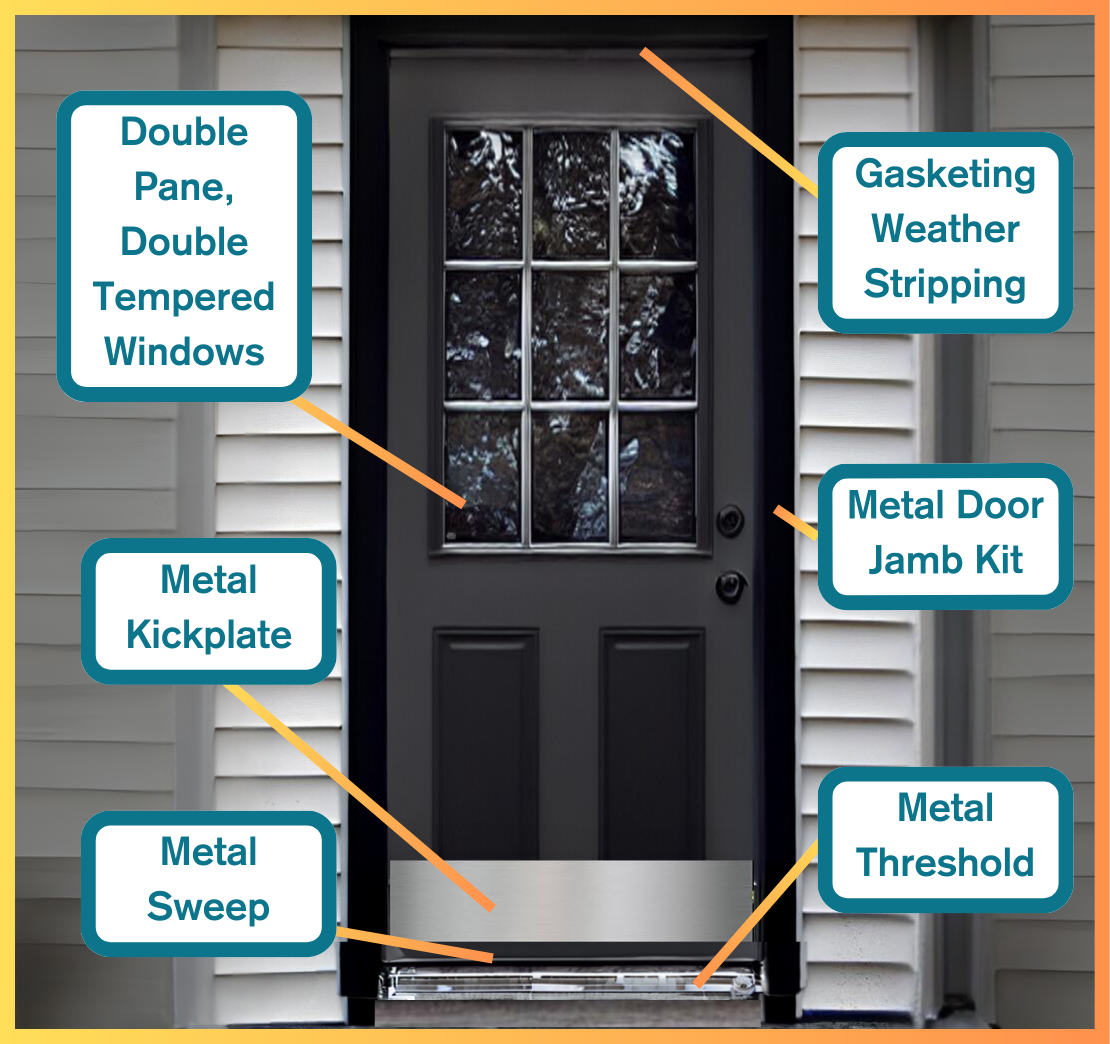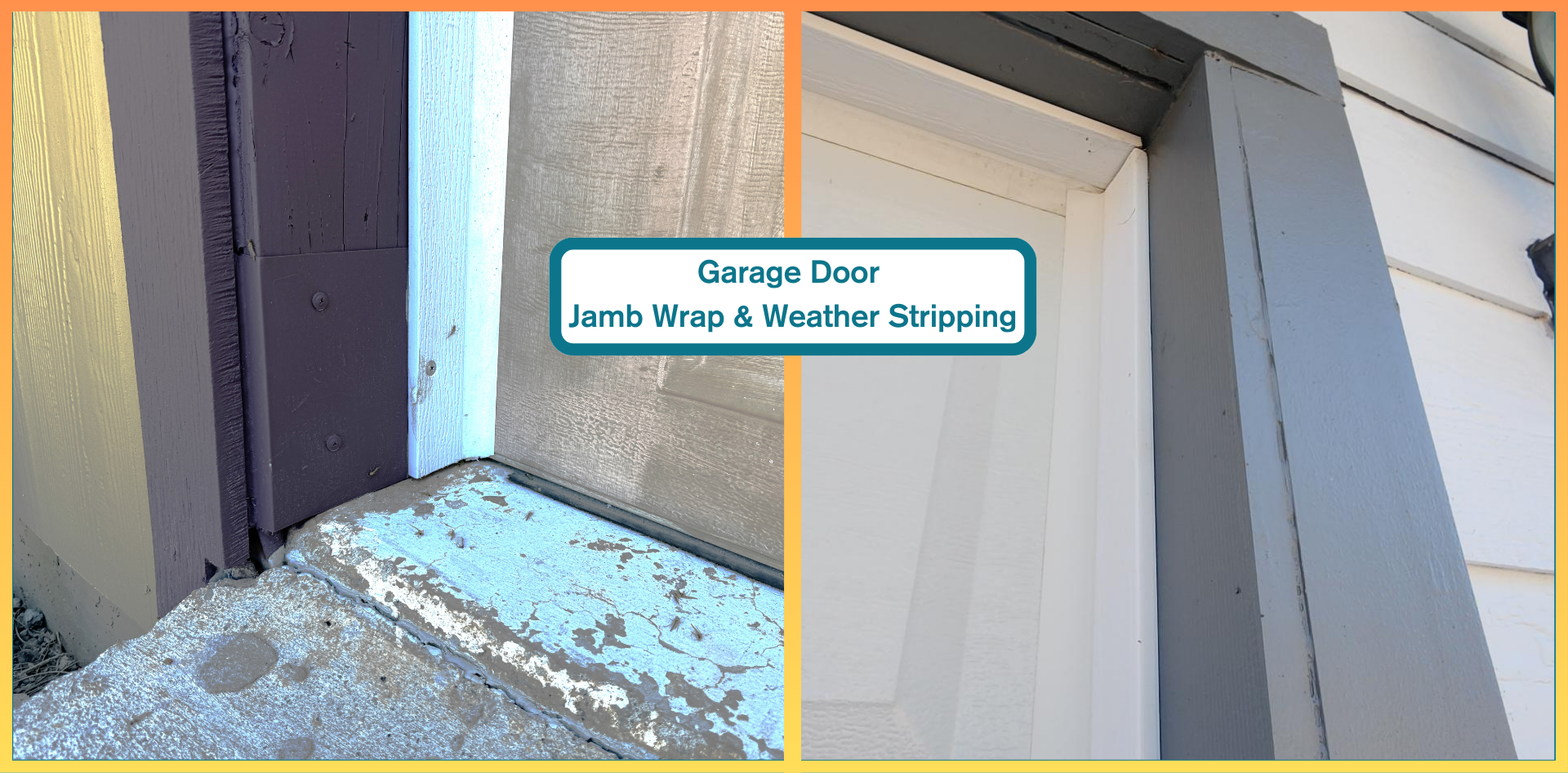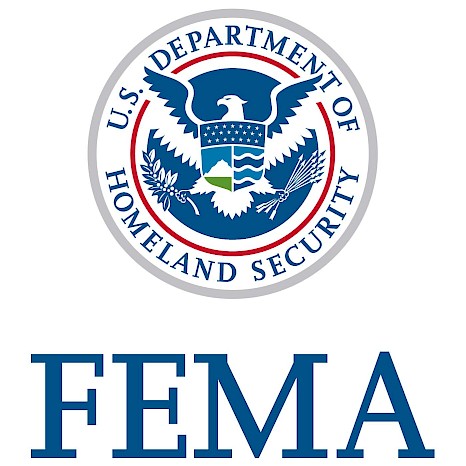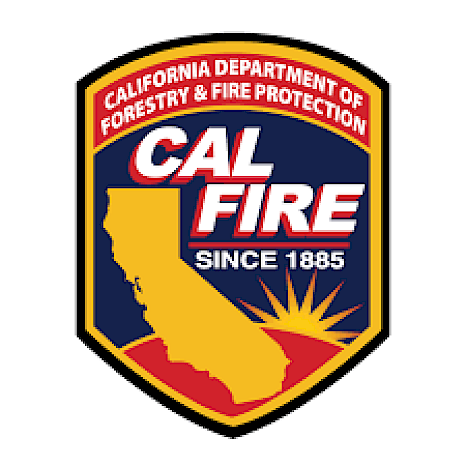Strengthening Your Home's Exterior Doors Against Wildfire:
When it comes to wildfire safety, your doors are more than just entry points; they can be significant vulnerabilities. Embers and flames are drawn to weak spots like combustible doors or gaps around the frame. Without proper retrofitting, these openings can quickly become pathways for fire to breach your home. Strengthening your exterior and garage doors with fire-resistant materials and sealing gaps is vital for wildfire protection. Upgrading doors to meet code standards isn't just a recommendation—it's essential for keeping embers at bay and protecting your home during a wildfire. Whether it’s replacing the entire door or adding a fire-resistant seal, the right upgrades make all the difference when the seconds count.

Key Points:
- Replace combustible or damaged exterior doors with fire-resistant options: Ensure compliance with code standards to maximize protection against wildfire.
- Replace combustible screen doors with metal screens that have a tight fit: Use noncombustible mesh with the recommended specifications.
- Sweep: A bottom seal extending across the door’s entire width, tested to UL Fire Rate 10C, helps prevent embers, fire, and smoke from passing under the door.
- Metal Kick Plate: A metal plate installed at the bottom of the door to protect it from damage and provide additional fire resistance. It should cover nearly the entire width of the door, as specified by building codes.
- Jamb Kit: A set of non-combustible components installed around the door frame to create a tight seal, preventing fire and smoke from passing through gaps.
- Gasketing: Seals placed around the door frame to prevent fire and smoke from passing through gaps.
- Weather Stripping: Applied around the door frame to block air and moisture, maintaining the integrity of the door and its seals and preventing ember intrusion.
This section details various door retrofit options to meet California's Wildfire Mitigation Program Code. Here's a breakdown:
Exterior Door Retrofits:
Full Door Replacement:
- Replace entire combustible, deteriorated, or damaged exterior doors with fire-resistant doors that comply with CBC 708A.3 or CRC R337.8.3 Exterior Doors standards.
- The new door finish should match the existing building for a cohesive look. You are responsible for removing and disposing of the old door at an approved disposal site.
Partial Door Retrofit:
- For existing combustible doors with gaps or holes, install a non-combustible door kick plate covering the bottom 6 inches and a non-combustible door bottom with a UL Fire Rate 10C rating.
- This option provides some ember protection without requiring a full door replacement.
Sliding/Swinging Screen Door Retrofit:
- Replace combustible or damaged sliding or swinging screen doors with new screens.
- The screen frame should be non-combustible, and the mesh should be aluminum with a tight fit (18x16 mesh, minimum wire diameter 0.21mm).
- Dispose of the old screen doors at an approved site.
Garage Door Retrofits:
Full Garage Door Replacement:
- Replace combustible, deteriorated, or damaged garage doors entirely with new doors that have a non-combustible exterior surface.
- Ensure the new door complies with CBC 708A.3 Exterior Doors and CBC Section 708A.4 Garage Door Perimeter Gap (or equivalent CRC sections).
- Follow the manufacturer's instructions for installation. Dispose of the old door at an approved site.
Garage Door Perimeter Gap Retrofit:
- Seal gaps between the garage door and its opening (bottom, sides, and top) to prevent embers from entering. Gaps cannot exceed 1/8 inch (3.2 mm).
- Follow methods outlined in CBC Section 708A.4 or CRC Section R337.8.4 (or equivalent local ordinances).
Partial Garage Door Retrofit:
- If the garage door frame is combustible, add a non-combustible metal flashing to the base (minimum 6 inches) or replace the combustible frame trim with fire-resistant materials following relevant building codes (CBC or CRC).
Compliance References:
- CBC (California Building Code): Sections 708A.3, 708A.4, 704A.2
- CRC (California Residential Code): Sections R337.8.3, R337.8.4, R337.4.2
Disclaimer: The California Wildfire Mitigation Program Home Hardening Initiative recommends the following measures to retrofit a residence. Please note that not all retrofits listed are available in the Lake County Home Hardening Program.
If you have any additional questions please contact us at homehardening@ncoinc.org or call 707-461-0760.
Next: Crawl Space Retrofits »
« Previous: Attachment Retrofits





